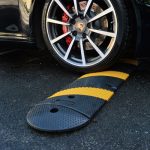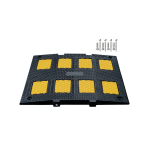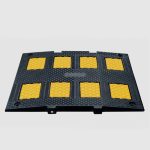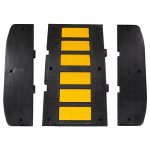Introduction to Car Stops for Parking Lots
Ensuring safety and organization in parking lots is essential for both drivers and pedestrians. Car stops, also known as wheel stops or parking blocks, play a critical role in this regard. These devices prevent vehicles from moving beyond a designated point, thereby protecting structures, property, and individuals.
Benefits of Using Car Stops
Implementing car stops in parking areas offers several advantages:
- Enhanced Safety: These stops help in preventing vehicles from accidentally rolling into pedestrian areas, buildings, or other parked cars.
- Improved Organization: Car stops provide visible and physical boundaries that help drivers park their vehicles correctly and within designated spots.
- Property Protection: By stopping vehicles, car stops prevent damage to curbs, landscaping, and signs.
Types of Car Stops
Car stops come in various types, each serving specific needs and applications:
Concrete Car Stops
Concrete car stops provide a durable and heavy solution, perfect for long-term use. They offer excellent stability and are often seen in commercial and municipal parking lots.
Plastic Car Stops
Plastic car stops are lightweight, easy to install, and usually made from recycled materials. They are highly visible and ideal for temporary or seasonal installations.
Rubber Car Stops
Rubber car stops are flexible and can withstand impact without much damage. They are perfect for areas with frequent vehicle turnover and provide superior shock absorption.
Materials Used in Car Stops
The effectiveness and longevity of car stops largely depend on the materials used in their construction. Here are some common materials:
- Concrete: Known for its strength and durability, concrete is a common choice for permanent installations.
- Plastic: Lightweight and often made from recycled materials, plastic car stops are easy to handle and install.
- Rubber: Offers flexibility and resilience, making it a preferred choice for areas with high vehicle turnover.
Installation of Car Stops
Proper installation of car stops is crucial to ensuring their effectiveness. Here are some steps to follow:
- Site Preparation: Clear the area of debris and level the surface where the car stop will be installed.
- Positioning: Place the car stop at the designated location, ensuring it is centered and aligned correctly with the parking stall.
- Anchoring: Depending on the material, use appropriate anchors such as rebar, bolts, or screws to secure the car stop to the surface.
Conclusion
Car stops are an integral part of parking lot design, contributing significantly to safety and organization. By understanding the types, materials, and installation methods, you can select the right car stops for your parking area.
For more information about prices and to explore various options, visit Unimat Traffic. Ensure the safety and organization of your parking lot by investing in high-quality car stops today!






